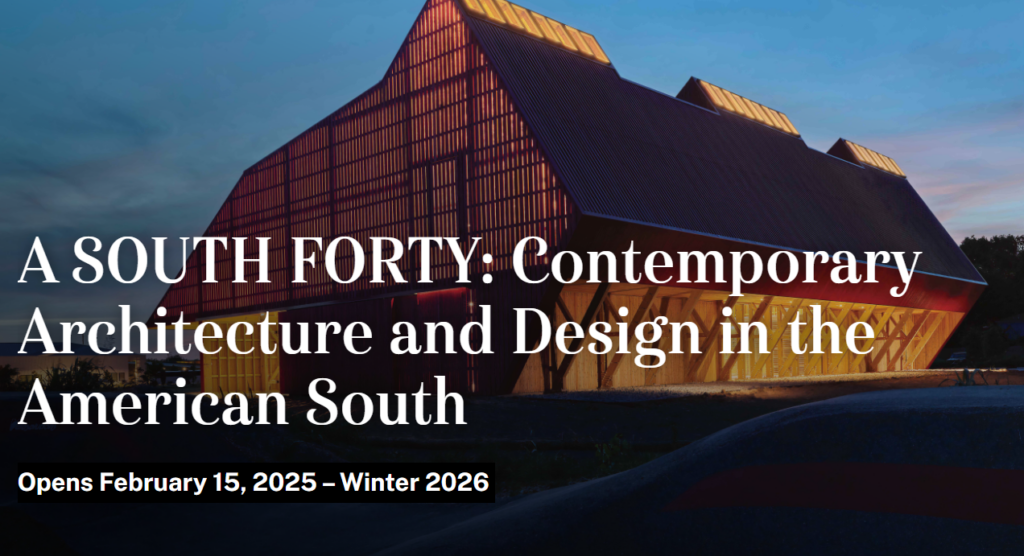News
February 2025
Wednesday, February 12th, 2025
A South Forty exhibition opens at the National Building Museum in Washington, DC on February 15.
A South Forty, an exhibition organized and curated by The Fay Jones School of Architecture and Design, University of Arkansas, is devoted to the vibrant, distinctive contemporary architecture and design practices of the American South. Sanders Pace Architecture is among the firms represented at this exhibition which opens on February 15 and runs through Winter of 2026.

Modern architectural history in the regional context of the American South is conventionally framed by singular figures, from Paul Rudolph and the Saratoga School of Florida to Fay Jones and Bruce Goff in the Ozarks and Oklahoma, or stereotypical typologies and appearances. In counterpoint, A SOUTH FORTY aims to provide an overview of the current vitality of contemporary architecture and design in the American South, through both illustrated profiles of buildings and practices, and statements of principles and observations by those in practice in the region.
The contemporary “story” centers on the development of architecture and design in the American South over the last generation (from 1990 forward) as the region undergoes rapid economic and population growth, withstands and recovers from multiple natural disasters, and discovers a more complex and diverse identity amidst the historical societal traditions and conventions. Such a mapping of the American South in these terms opens new and essential territories for work in architecture – more positive, empowering, engaged, sensitive and aware work altogether.
The “story” of A SOUTH FORTY is also one of place-based design, attentive to the necessities of climate, materials, labor, and purpose, but also attentive to overlooked or undervalued typologies, constituencies, and locales. While there is the surge of new urban centers and suburban peripheries as conditions to address in the region, there also is a new appreciation for the smaller communities and rural or even wilderness landscapes as productive sites for distinctive work. As well, while design excellence has been achieved by many practices at the residential scale, the greater emphasis in the exhibition is to be seen at the public scale, in the civic realm, through the accomplishment of buildings and projects of strength, durability, and value for the communities in which they are situated.
The exhibition implicitly proposes that the path towards that better “place” of the region leads through both recognition of a common inheritance embedded in the landscape of the American South, and a reconciliation with that physical, cultural, and phenomenal landscape. There is much work accomplished, but much still to be done, and as a project, A SOUTH FORTY is just beginning, and still becoming.